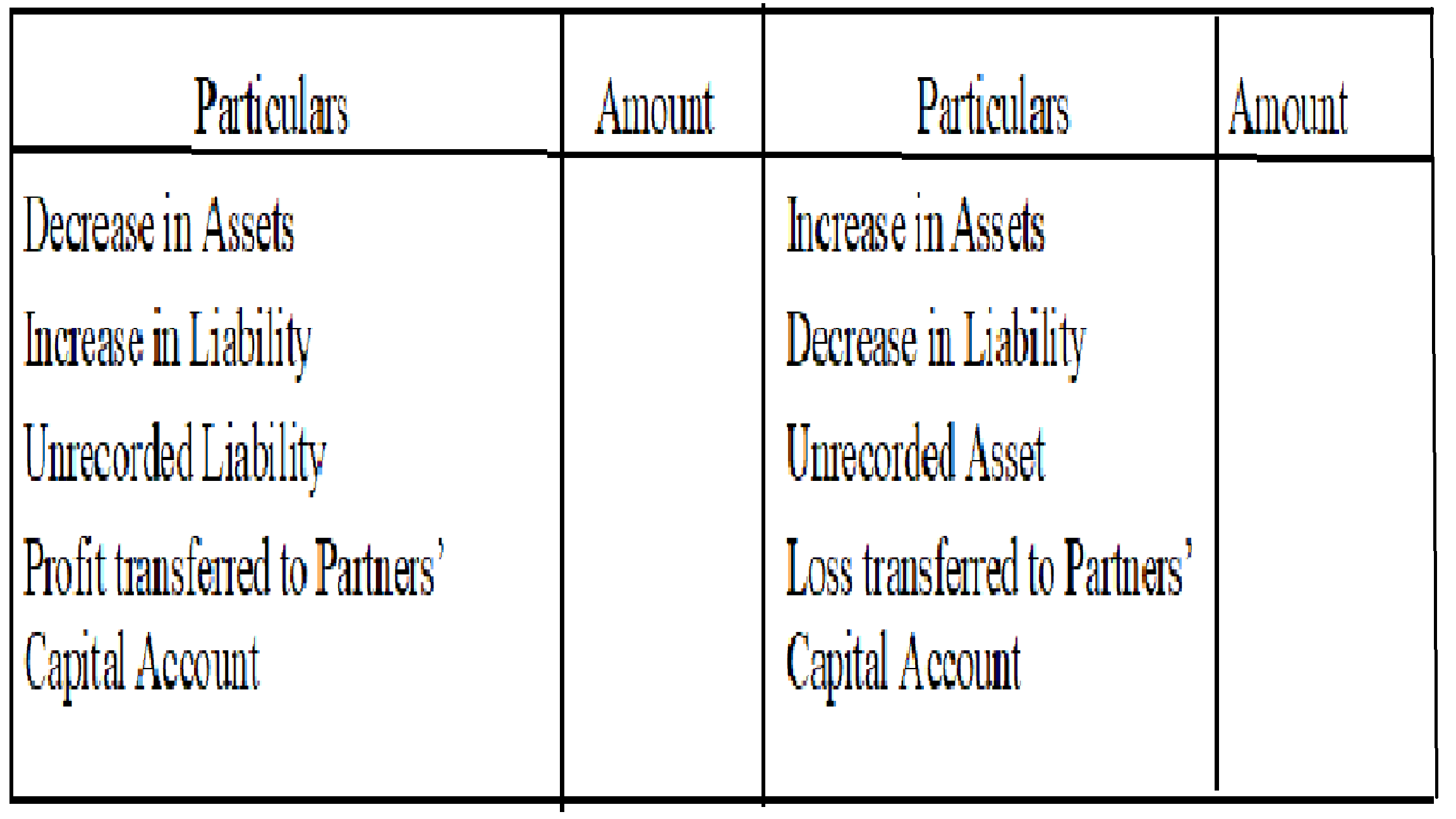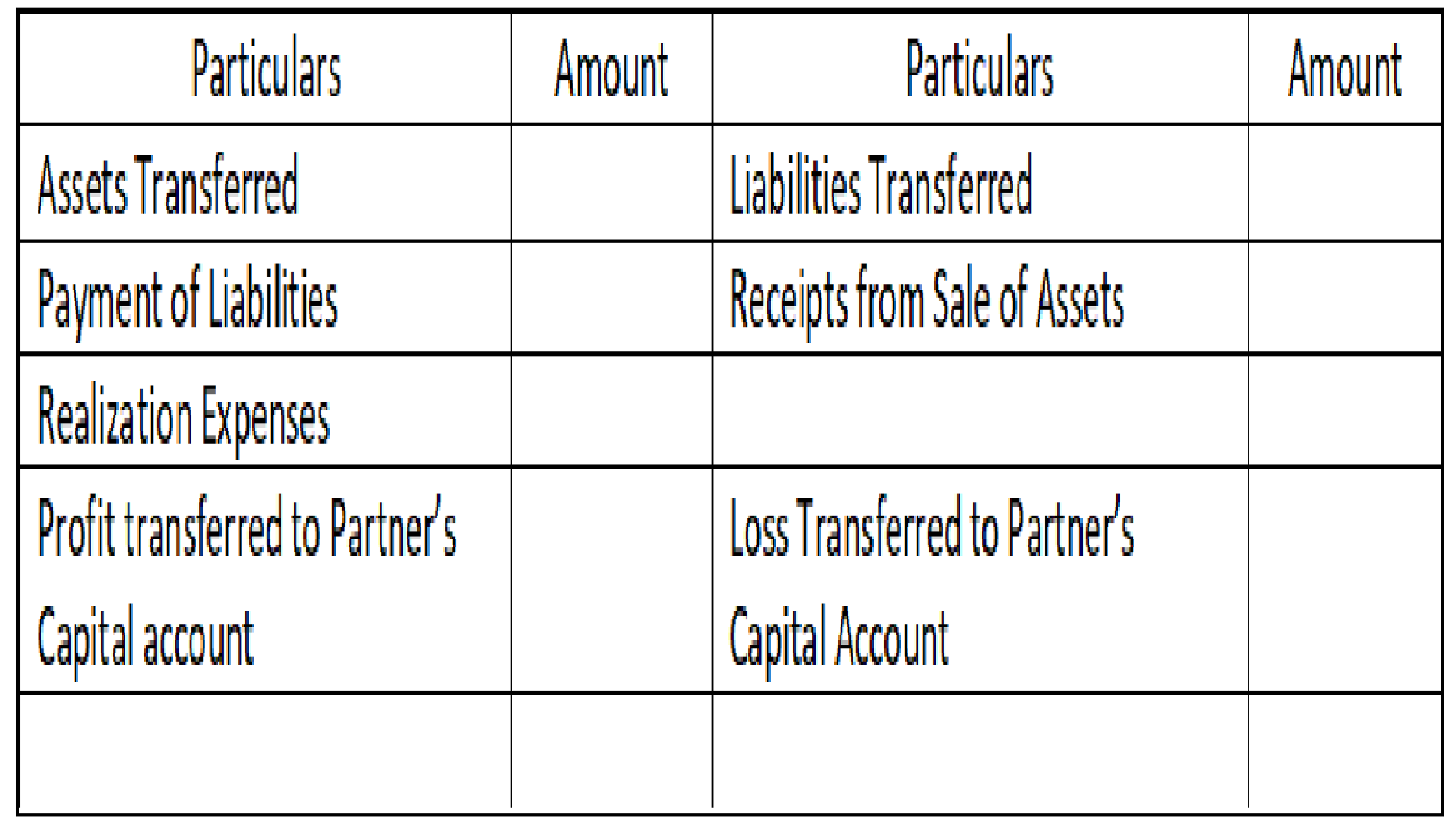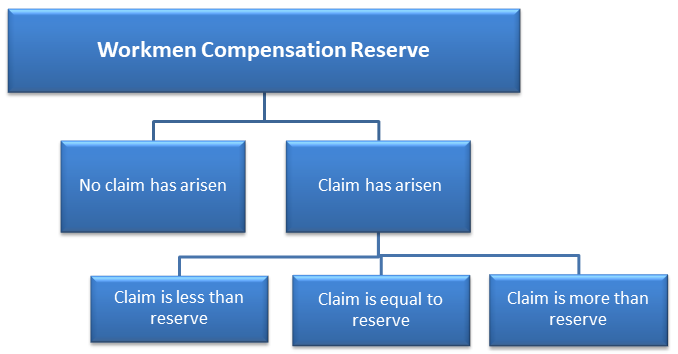A revaluation Account is an account created to record the changes in the value of assets and liabilities during: Change in profit sharing ratio Admission of a partner Retirement of a partner Death of a partner The realization Account is prepared to sell assets and pay liabilities in the event of theRead more
A revaluation Account is an account created to record the changes in the value of assets and liabilities during:
- Change in profit sharing ratio
- Admission of a partner
- Retirement of a partner
- Death of a partner
The realization Account is prepared to sell assets and pay liabilities in the event of the dissolution of the firm.
Revaluation Account is prepared for dissolution of the partnership while Realization Account is prepared for dissolution of the partnership firm.
The increase or decrease in the value of assets and liabilities is transferred to the Realisation Account and the gain or loss thereof is transferred to the old partner’s capital account.
- A decrease in Assets and an Increase in Liabilities is debited since it is a loss for the firm and all the losses are debited.
- An increase in Assets and a Decrease in Liabilities is credited since it is gained for the firm and all the profits are credited.
Format of Revaluation Account will be:

Format of Realization Account will be:

The difference between Realisation and Revaluation Account is:
| Revaluation Account | Realization Account |
| Prepared to record changes in assets and liabilities | Prepared to record sale of assets and payment of liabilities |
| Prepared at the time of dissolution of the partnership | Prepared at the time of dissolution of partnership firm |
| Assets and liabilities still exist in the books only their values change | Assets and liabilities do not exist in the books of the firm |
| This account contains only those assets and liabilities that are to be revalued. | This account contains all the assets and liabilities of the firm. |
| A revaluation Account can be prepared any number of times during the lifetime of the firm. | The realization Account is only made once during the dissolution of the firm. |
| The gain or loss during revaluation is transferred to the old partner’s capital accounts. | The gain or loss during realization is transferred to the capital account of all the partners. |
See less








Realisation account A realisation account is a nominal account prepared at the time of dissolution of a business. All the assets and liabilities except cash and bank balance are transferred to the realisation account. A realisation account is prepared to calculate the profit or loss on the dissoluRead more
Realisation account
A realisation account is a nominal account prepared at the time of dissolution of a business. All the assets and liabilities except cash and bank balance are transferred to the realisation account. A realisation account is prepared to calculate the profit or loss on the dissolution or closing of the firm.
All the assets are transferred to the debit of the realisation account and all the liabilities are transferred to the credit of the realisation account. When assets are sold, Cash A/c is debited and Reliastion A/c is credited and when liabilities are paid off, Cash A/c is credited and Realisation A/c is credited.
If the credit side exceeds the debit side of the realisation account, it results in profit. In contrast, if the debit side exceeds the credit side of the realisation account, it results in a loss. in case of profit, the Capital account is credited and in case of loss, the Capital account is debited.
Credit side of realisation account
Liabilities A/c Dr…..
To Realisation A/c …..
(All the liabilities transferred to realisation account)
Provision A/c Dr…..
To Realisation A/c …..
(All the provisions transferred to the realisation account)
Bank A/c Dr…..
To Realisation A/c …..
(Asset sold for cash)
Capital A/c Dr…..
To Realisation A/c …..
(Being loss transferred to the capital account)
The debit side of the realisation account
All the assets including Land and building, Plant and machinery, furniture, stock, debtor and investment are transferred to the debit of the realisation account and payment of outside liabilities is also recorded on the debit side of the realisation account. Payment made for dissolution expenses is also recorded on the debit side of the realisation account.
Format for realisation Account is as under:
See less